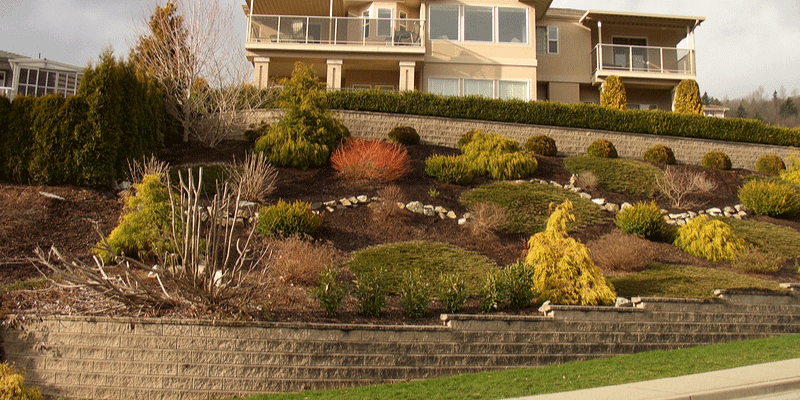Retention walls have been becoming more common in the commercial and residential landscape. The range of options expanding with materials and ways to install has made them more attractive than ever before. Retention walls are structures that can add the appearance of depth to your landscape and functional in terms of altering drops or climbs in grades in your yard. Here are some tips to keep in mind when building a retention wall.
The Base
You want to make sure the wall rests on a firm base. Only place a wall on fill if it has been properly compacted to avoid the wall becoming warped or not being able to withstand the soil behind it. No organic material like topsoil should be under the wall to avoid sinking over time. If topsoil is present, it needs to be removed before creating the retention wall.
Wall Footing
Spread footing may be needed depending on your height, material, and soil type for the wall. Spread footing is a widened part of the wall that allows the structure to barre more of the load over a wider area of soil. Think of it as the bottom of a pillar.
Frost Depth
If you are unsure of your frost depth, your local municipalities should be able to point you in the right direction towards an answer. The base of the wall has to be placed below your frost depth. If you must build above your frost depth, be sure to use a concrete block rather than soil at the ground level. You can then build your retention wall on top of the concrete block.
The Wall
The retention wall must be able to handle the earth that is behind it. If you are installing a large-scale retention wall, it is important to understand the implications that come with increasing the size. There are different materials for retention walls that work best in various sizes. Lateral stability can be reinforced by using mesh wiring and concrete blocks to hold the earth in place behind the wall even further for an extra layer of support.
Water
Run-off and drainage patterns need to be taken into account when constructing your retention wall. Drainage pipes will have to be placed at the backside base of the wall to relocate water away from the water to avoid erosion and create additional pressure.
Safety Measures
Safety measures surrounding the wall should be taken to ensure no accidents happen. Retention walls can be quite large. You want to avoid having anyone take a fall from them. Residential aesthetics might not be the best for a physical safety precaution whereas commercial properties should consider installing railings at the top of the wall to avoid any accidents.
Surrounding Areas
You must take into account how the surrounding area will be used as well. It is important to leave space to avoid creating additional lateral pressure unknowingly. If you are building a retention wall near a driveway or pool, be mindful of this and do research on how it affects materials and so forth.


